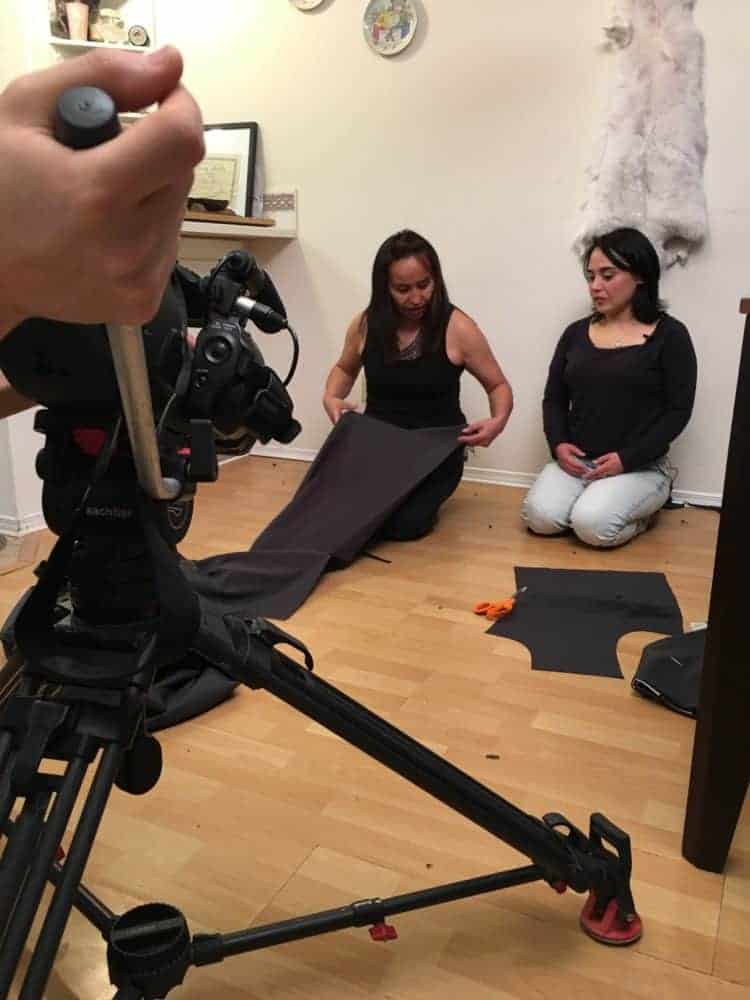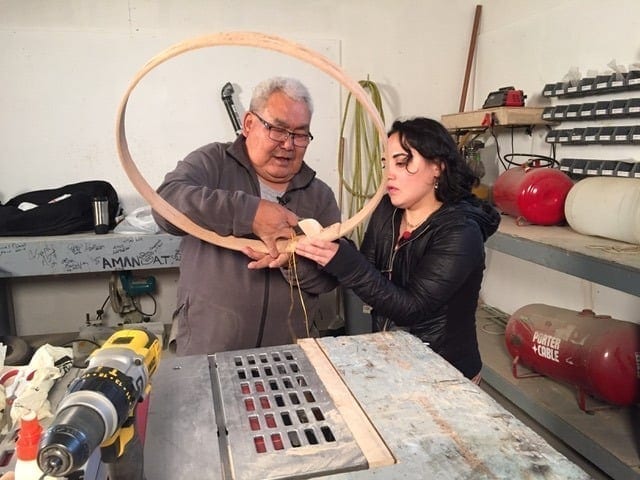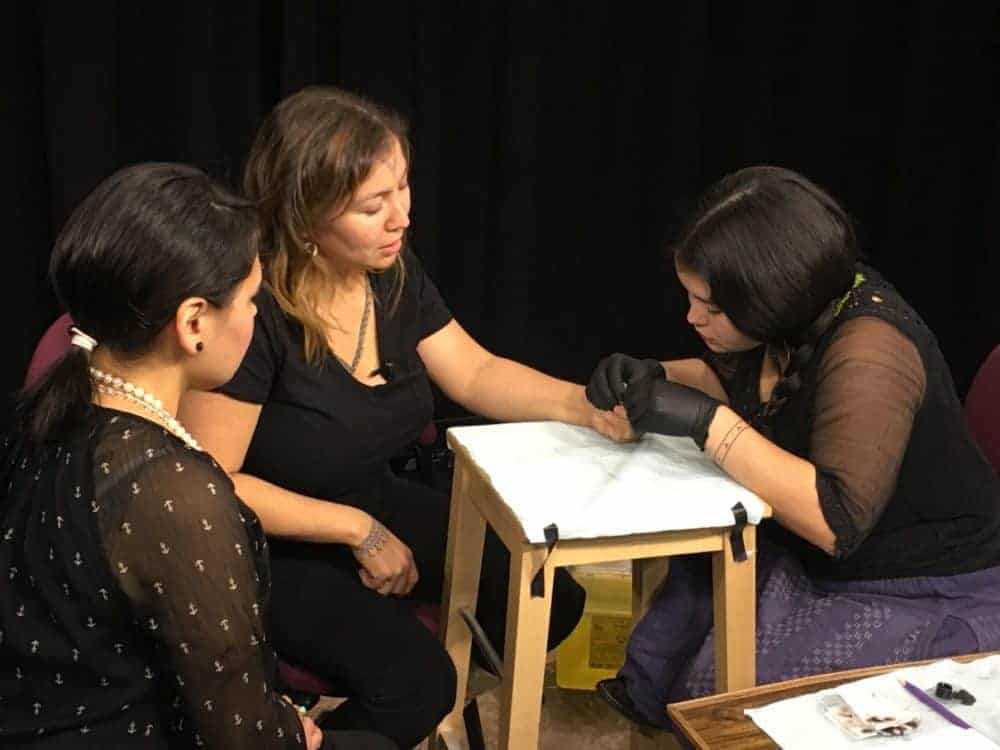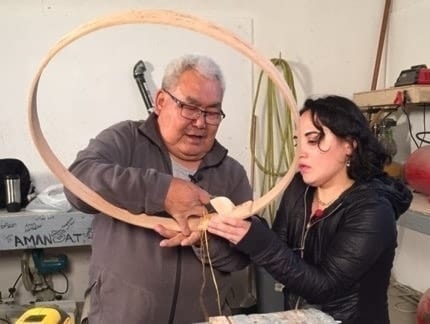An all-new Inuktitut television series focused on Inuit ingenuity debuted on APTN Jan.7.
Uakallanga, created by the Inuit Broadcasting Company (IBC), is hosted by Annabella Piugattuk.

Host Annabella Piugattuk learns how to make a men's jacket from Mary-Lee Aliyak for Uakallanga!, which debuted on APTN January 7.
IBC director of operations Malakie Kilabuk – who directed, and did some of the camera work alongside Mo Kipanik – said the idea for the series came from an IBC staff brainstorming session.
"We came up with a bunch of ideas. We nailed it down to a couple of series we wanted to do," said Kilabuk, adding that's an exercise staff does on an annual basis.
Uakallanga, which translates to "wow and impressive," sees Piugattuk learn how to create such items as a drum, a spear, an ulu, and an amauti, among others.
Former IBC producer Sylvia Cloutier, who worked on this first season and helped out with a second, says a lot of the ideas that staff came up while brainstorming had to do with making things.
"It was all based on what the staff wanted to learn from our Inuit culture and what we thought the viewer would be interested in learning, as well," said Cloutier.
"The more ideas that were generated, it seemed it would be a good fit to create a show following Inuit making things. Inuit are so innovative and always have been, using materials like by-products of animals. Even materials that are thrown in the garbage – we've heard of Inuit going to the dump and getting materials to make something."
Cloutier recalls hearing of someone making a qulliq out of an old frying pan. Another story tells how an Inuk had a Ski-Doo break down on the land.
"Obviously he couldn't get a part for his machine – he was out on the land – and he fixed his machine with whatever materials they had. I think it was the packaging of a food item they had brought out. It just goes to show how Inuit are so resourceful. There's no such thing as there's nothing out there on the land to work with," she said.
"We wanted to create a series that really highlighted some of these amazing skills that Inuit have."
That includes the artistry of women who sew, Inuit artists who make jewelry, makers of old tools which are no longer the norm – all with traditional and modern materials.

David Serkoak of Arviat leads Uakallanga! viewers and host Annabella Piugattuk through the steps of making a drum.
"For instance, the drum used to be made of driftwood and caribou skin, sinew from the caribou back muscle, and antler. But, today, we use lumber purchased from the store," said Cloutier.
"David Serkoak, who was one of our – we call someone who comes on TV a talent … so he was somebody who came to Iqaluit to show our host how to make a drum, how we make it in the modern day."
Cloutier says people don't always have the means to get traditional material, but the main idea is to promote the practice.
Kilabuk says while in some episodes two or three items are featured, the norm is one item per episode.
"We do our research and find people who are willing to make something, and know how to make the item," Kilabuk said.
As a director, Kilabuk's specific interests included locations, how a scene would be shot, and which angles.
His enjoyment comes from "just being out there shooting and directing, and meeting people" he said.
"Learning things, too."
His favourite episode featured learning how to make a bird-claw necklace.
Cloutier says the team also wanted to feature items children use, to give parents ideas of items they can make for their kids, like a children's qamutik.
One target audience for IBC on this series is younger Inuit, and while the broadcaster's audience is usually older Inuktitut speakers, non-speakers can easily follow the detailed visuals. There are English subtitles.
"It's always interesting to learn how to make something from beginning to end," said Cloutier, adding that includes a conversation about how it's made, the history of the object, why the person is making it, how they learned, and why it's made a certain way.
So far the series has only filmed in Iqaluit. The first season, now airing ,was filmed in 2017. A second season is in production, with a third planned.
Uakallanga! airs Monday evenings at 8:30, repeating Tuesdays, Thursdays and Fridays at different times on the station's North feed.

Alethea Arnaquq-Baril receives traditional tattoos on her fingers from Ippiksaut Friesen, while Uakallanga! host Annabella Piugattuk watches.
